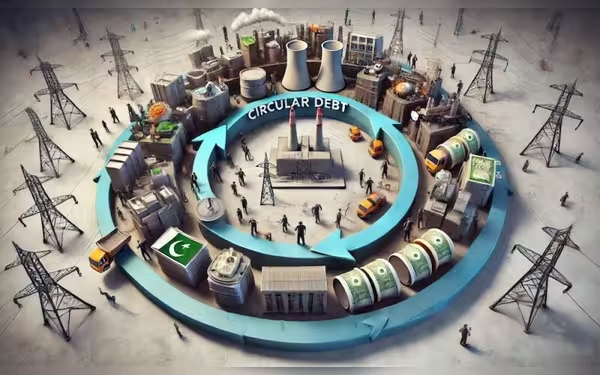Thursday, November 7, 2024 10:47 AM
Circular Debt Crisis Driving Electricity Costs in Pakistan
- Circular debt hampers power producers' cost recovery.
- Rising tariffs threaten industrial growth and profitability.
- CPPA's staggering payables highlight economic burden.
 Image Credits: dawn.com
Image Credits: dawn.comThe circular debt crisis in Pakistan is significantly driving up electricity costs, impacting consumers and threatening industrial growth.
The issue of circular debt in Pakistan has become a significant concern, particularly in the context of rising electricity costs. Circular debt refers to the situation where power producers are unable to recover their costs due to non-payment by distribution companies, leading to a vicious cycle of debt. This problem has been exacerbated by various factors, including inefficiencies in the power sector, high transmission losses, and the burden of extraneous costs that inflate electricity tariffs.
As electricity tariffs continue to rise, the impact on consumers and businesses is profound. The bloating of these tariffs with unnecessary costs has created a scenario where the demand for electricity is on a downward trend. This decline in demand is not just a statistic; it has real-world implications, restricting industrial and economic growth across the nation. Industries, which are the backbone of economic development, are finding it increasingly difficult to operate profitably under the weight of high electricity costs.
Moreover, the financial strain is evident in the staggering payables of Rs1.060 trillion by the Central Power Purchasing Agency (CPPA). This amount is not just a number; it represents a significant burden on the economy. To alleviate this situation, it has been suggested that these payables need to be swapped out by sovereign debt. This approach could potentially provide some relief, but it also raises questions about the long-term sustainability of such measures.
The circular debt issue is a hidden force that is driving up electricity costs in Pakistan, with far-reaching consequences for both consumers and the economy. Addressing this problem requires a multifaceted approach, including reforms in the power sector, better management of resources, and a commitment to reducing inefficiencies. Only through concerted efforts can Pakistan hope to stabilize its electricity costs and foster an environment conducive to industrial and economic growth. The path forward may be challenging, but it is essential for the nation's future prosperity.













